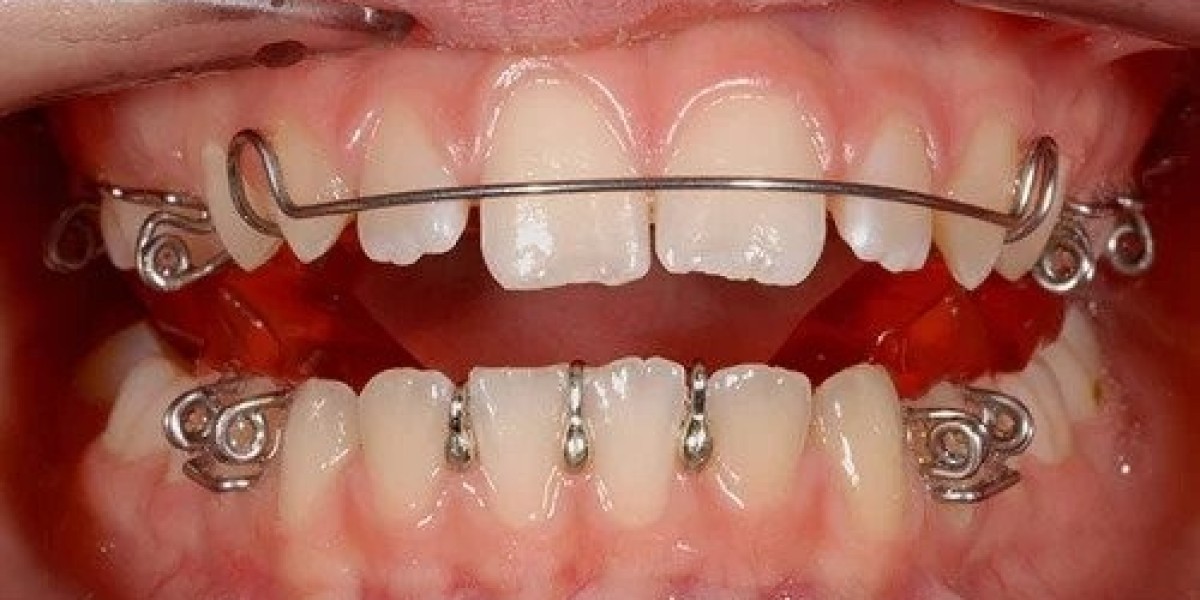Orthodontic and dentofacial orthopedic treatment can significantly improve a person's oral health and overall quality of life. However, the financial aspect of such treatment often raises concerns for individuals and families. In this comprehensive guide, we will delve into the costs associated with Dentofacial Orthopedics in Abu Dhabi, explore insurance coverage options, and provide practical tips to make this transformative journey more manageable.
Understanding Dentofacial Orthopedic Treatment
Before delving into the financial aspects, let's briefly understand what dentofacial orthopedic treatment entails. Dentofacial orthopedics is a specialized branch of orthodontics that focuses on correcting irregularities in the face and jaw, including misalignments, asymmetry, and developmental issues. It aims to optimize facial aesthetics, jaw function, and overall oral health.
Dentofacial orthopedic treatment often involves the use of orthodontic appliances like braces, headgear, or aligners, along with other specialized devices. The duration and complexity of treatment can vary widely from patient to patient, depending on their unique needs.
Costs Associated with Dentofacial Orthopedic Treatment
The cost of dentofacial orthopedic treatment can be influenced by several factors, including:
1. Treatment Complexity
The severity of the orthopedic issue and the complexity of the required treatment plan play a significant role in determining costs. Cases that involve more extensive corrections or surgical interventions may be more expensive.
2. Treatment Duration
The length of treatment can also impact costs. Longer treatment durations often translate to higher expenses, as they require more frequent appointments and adjustments.
3. Geographic Location
The cost of living and the availability of orthodontic specialists can vary by region. Urban areas tend to have higher treatment costs than rural areas.
4. Orthodontist's Expertise
Experienced orthodontists and dentofacial orthopedic specialists may charge higher fees for their services. However, their expertise can often lead to more efficient and effective treatment.
5. Type of Orthodontic Appliances
The choice of orthodontic appliances can affect costs. Traditional metal braces may be more affordable than clear aligners or other specialized devices.
6. Diagnostic Procedures
Diagnostic tests such as X-rays, 3D scans, and impressions are essential for treatment planning and can add to the overall cost.
7. Additional Services
Some patients may require additional services, such as orthognathic surgery, to achieve optimal results. These surgical procedures can significantly increase the total cost of treatment.
Insurance Coverage for Dentofacial Orthopedic Treatment
While dental insurance often covers orthodontic treatment to some extent, it's crucial to understand the specifics of your policy. Here are key points to consider:
1. Orthodontic Coverage
Dental insurance plans typically provide orthodontic coverage for children but may offer limited or no coverage for adults. Coverage may include a percentage of the total treatment cost up to a lifetime maximum.
2. Age Restrictions
Orthodontic coverage often applies to children up to a certain age (e.g., 18 years). Adults seeking dentofacial orthopedic treatment may need to explore alternative financing options.
3. In-Network Providers
Insurance plans often have a network of preferred orthodontists. Visiting an in-network provider can result in more favorable coverage terms.
4. Pre-Authorization
Before beginning treatment, it's advisable to obtain pre-authorization from your insurance provider. This process involves submitting a treatment plan to determine the estimated coverage and out-of-pocket expenses.
5. Coordination of Benefits
If you have dual coverage (e.g., through both parents), coordination of benefits can affect coverage amounts. It's essential to understand how multiple insurance plans interact.
6. Waiting Periods
Some insurance plans have waiting periods before orthodontic coverage becomes available. Be sure to check for any waiting period requirements.
7. Lifetime Maximums
Many insurance plans impose a lifetime maximum benefit for orthodontic treatment. It's important to know this limit to plan accordingly.
8. Flex Spending Accounts (FSAs) and Health Savings Accounts (HSAs)
These tax-advantaged accounts can be used to cover orthodontic expenses. Contributions to these accounts are typically made pre-tax, reducing your overall cost.
9. Alternative Financing
For those with limited or no insurance coverage, alternative financing options, such as orthodontic payment plans or third-party financing, can help manage costs.
Maximizing Your Orthodontic Insurance Coverage
To make the most of your insurance coverage for dentofacial orthopedic treatment, follow these steps:
1. Review Your Policy
Carefully review your dental insurance policy to understand the extent of your orthodontic coverage, including any limitations, waiting periods, or lifetime maximums.
2. Choose an In-Network Provider
Whenever possible, select an orthodontist who is part of your insurance provider's network to maximize coverage and minimize out-of-pocket expenses.
3. Obtain Pre-Authorization
Seek pre-authorization from your insurance provider to confirm coverage details and get an estimate of your out-of-pocket costs.
4. Plan Your Budget
Create a budget that considers both the estimated insurance coverage and your expected out-of-pocket expenses. This will help you prepare financially for the treatment.
5. Explore Financing Options
If your insurance coverage is limited, explore alternative financing options, such as orthodontic payment plans or third-party financing programs offered by your orthodontist.
6. Maintain Regular Check-Ins
Stay in touch with your orthodontist and insurance provider throughout your treatment to address any billing or coverage questions promptly.
Conclusion
Dentofacial orthopedic treatment can be a life-changing experience, leading to improved oral health and enhanced facial aesthetics. While the financial aspect of such treatment may initially seem daunting, understanding your insurance coverage and exploring financing options can make it more manageable. Remember that investing in your oral health can have long-lasting benefits, contributing to your overall well-being and self-confidence. Make informed decisions and embark on your dentofacial orthopedic journey with confidence.


